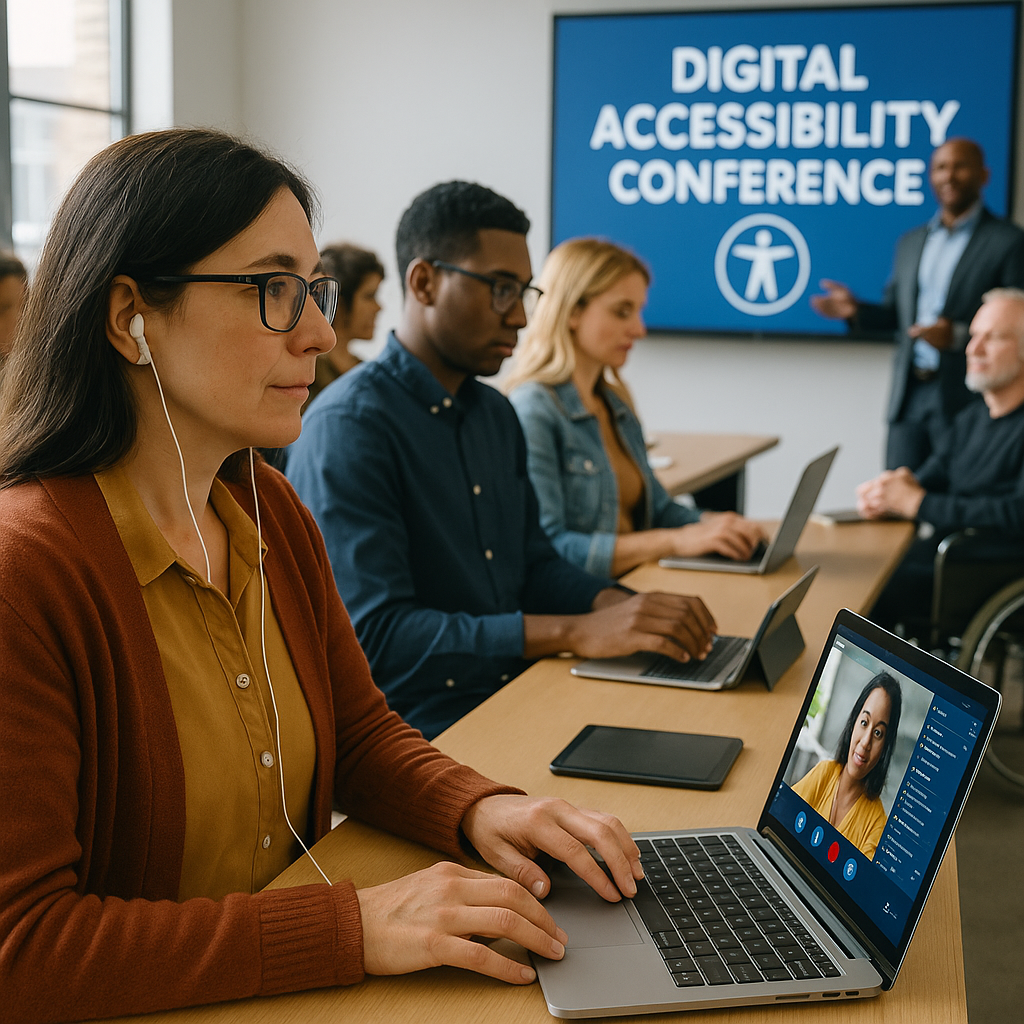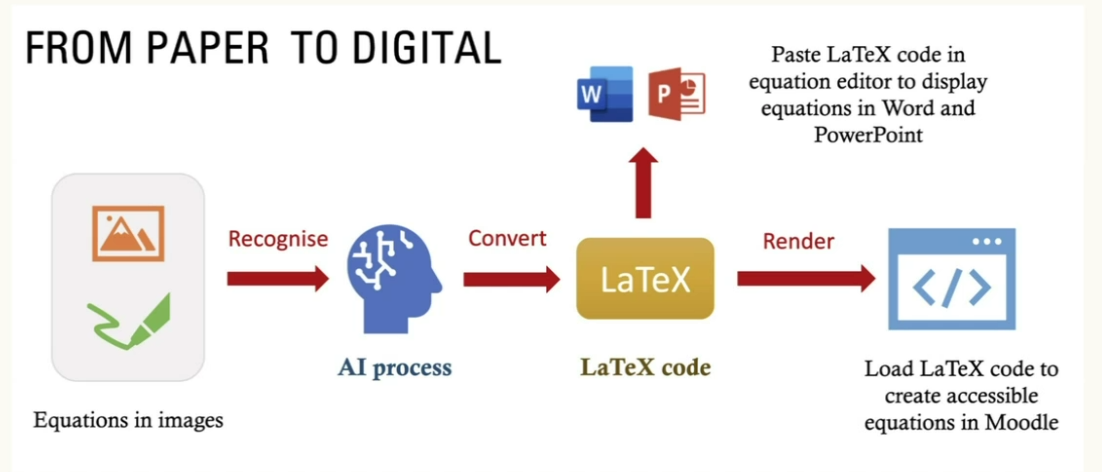Embedding Accessibility: Reflections on the Digital Accessibility Conference 2025

Generated by AI: Diverse group at a digital accessibility conference, with in-person and online participants
On 25th June, against the backdrop of the new European Accessibility Act coming into force, Meg and Cat attended the Digital Accessibility Conference 2025, hosted by the University of Nottingham. This annual event brought together practitioners, researchers, and advocates to share innovations, challenges, and strategies for creating more inclusive digital learning environments. Below are our reflections on the key messages and inspiring innovations shared on the day.
Towards Institutional Maturity
The opening keynote by Nigel Owen (Assistant Director: Learning Technology, University of Nottingham) set the tone by exploring what it really means for an institution to mature in its accessibility practice. He argued persuasively that accessibility must move beyond checklists, policies, and tools - these are the scaffolding, not the structure. True maturity is when accessibility becomes part of an institution's DNA: "woven into the ethos, systemic and sustainable, as natural as wearing a seatbelt".
He also reminded us that accessibility is everyone's responsibility and emphasised the profound impact even small efforts can have. Yet, he acknowledged the real challenges: financial pressures, competing priorities, and the risk of 'accessibility fatigue' - a timely reminder of the need to support, rather than burden, staff in this work.
Innovations in Practice
The conference showcased inspiring examples of creativity and innovation:
- Maths accessibility made easier: Steve Wang (University of Nottingham) demonstrated an AI-based equation converter that generates LaTeX from handwritten or imaged equations - invaluable for making STEM content accessible even for staff unfamiliar with LaTeX

Workflow diagram showing paper-digital equations using AI
- Accessible visuals in STEM: Ashani Ranathunga (University of Leeds) described a practical strategy, linking complex visuals to lecture recordings and supplementing with audio clips and clear signposting, to improve student comprehension.
- Generative AI for alt text: Walter van Heuven (University of Nottingham) presented a secure, university-hosted toolkit that leverages GPT-4o to create high-quality, context-aware alt text for PowerPoint presentations - saving time while improving quality.
- Online tours to ease anxiety: Lili Ordonez's 360o virtual teaching space tours at UWE Bristol, support students' mental health by familiarising them with campus spaces before they arrive - a thoughtful response to an often-overlooked barrier.
- Sensory maps: The University of Westminster is creating symbol-based sensory maps of library spaces, empowering students to choose environments that meet their sensory needs, while balancing accessibility with security considerations under Martyn's Law.
Building Cultures of Accessibility
Many sessions explored how to embed accessibility into institutional culture. At the University of Derby, Charlotte Gregory-Ellis explained how 'Digital Learning Baselines' and targeted training help raise standards and awareness. Meanwhile, UCL is making Moodle accessibility reports more actionable by simplifying and contextualising feedback for departments.
Edge Hill University shared their experience using the Higher Education Maturity Model (HEMM), which helps institutions celebrate progress, identify opportunities, and create realistic roadmaps. A key message from this and other case studies was: start somewhere - even small steps matter - and build networks to share the load.
The Open University described their holistic approach: building accessible-by-design systems, developing reusable components, maintaining strong communities of practice, and 'closing the organsational learning loop' so that lessons are learned, not lost.
AI: Opportunity or Risk?
A recurring theme was the growing role of AI in accessibility - and the ethical, security, and equity issues it raises. Robert Spark (University of Sheffield) reminded us that while AI-powered assistive tools offer great promise, they also raise new questions about privacy, data protection, and whether their use might unintentionally widen inequalities for disabled students. This is an area that will require thoughtful policies and ongoing dialogue.
Final Thoughts
The conference left us inspired but also reflective. Accessibility work is never 'done' - it is a process of continuous improvement, collaboration, and empathy. What stood out most was not just the innovative tools and practices, but the shared commitment to making higher education more inclusive for everyone.
As one speaker put it:
Every accessible explanation opens a door to learning for someone who has been quietly locked out.
That is a door we all have a part in opening.
Conclusion: A Shared Responsibility
The Digital Accessibility Conference 2025 showed just how much creativity, innovation, and determination exists in our sector when it comes to making education more inclusive. But it also reminded us how much more there is to do - and that accessibility is not the job of a few specialists.
We each have a role to play in ensuring that our digital spaces, resources, and practices are welcoming and usable for everyone. You don't need to be an expert to make a difference. Small, everyday actions - like adding meaningful alt text, using accessible formats, or designing with inclusion in mind - can have a big impact.
So here is our challenge to you:
- Take one step over the next couple of months to improve accessibility in your own work
- Talk to a colleague about what accessibility means to you
- Seek out training, guidance, or support if you're unsure where to start
- Above all, remember: accessibility is about removing barriers so everyone can reach their potential - and that benefits us all.
If you'd like to catch up on the conference, you can view the programme and all recordings via the University of Nottingham webpage.
